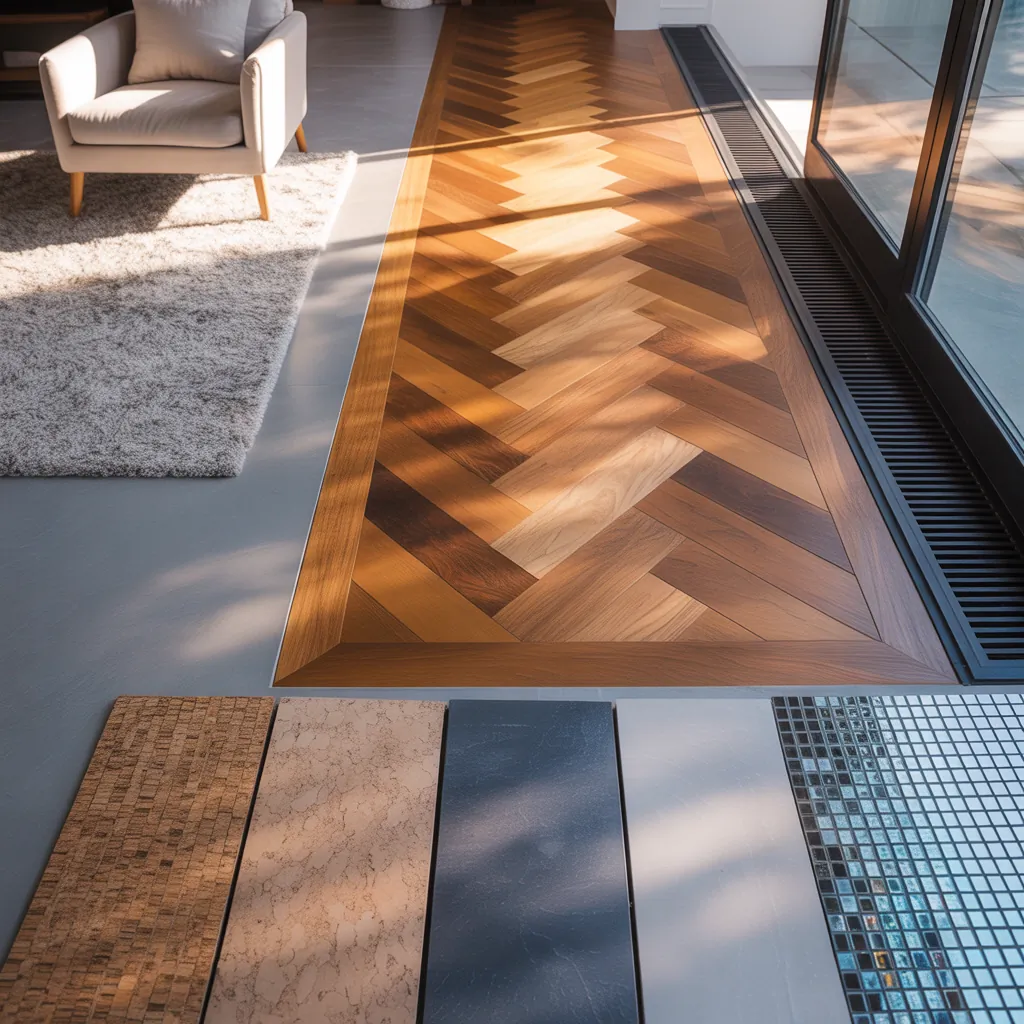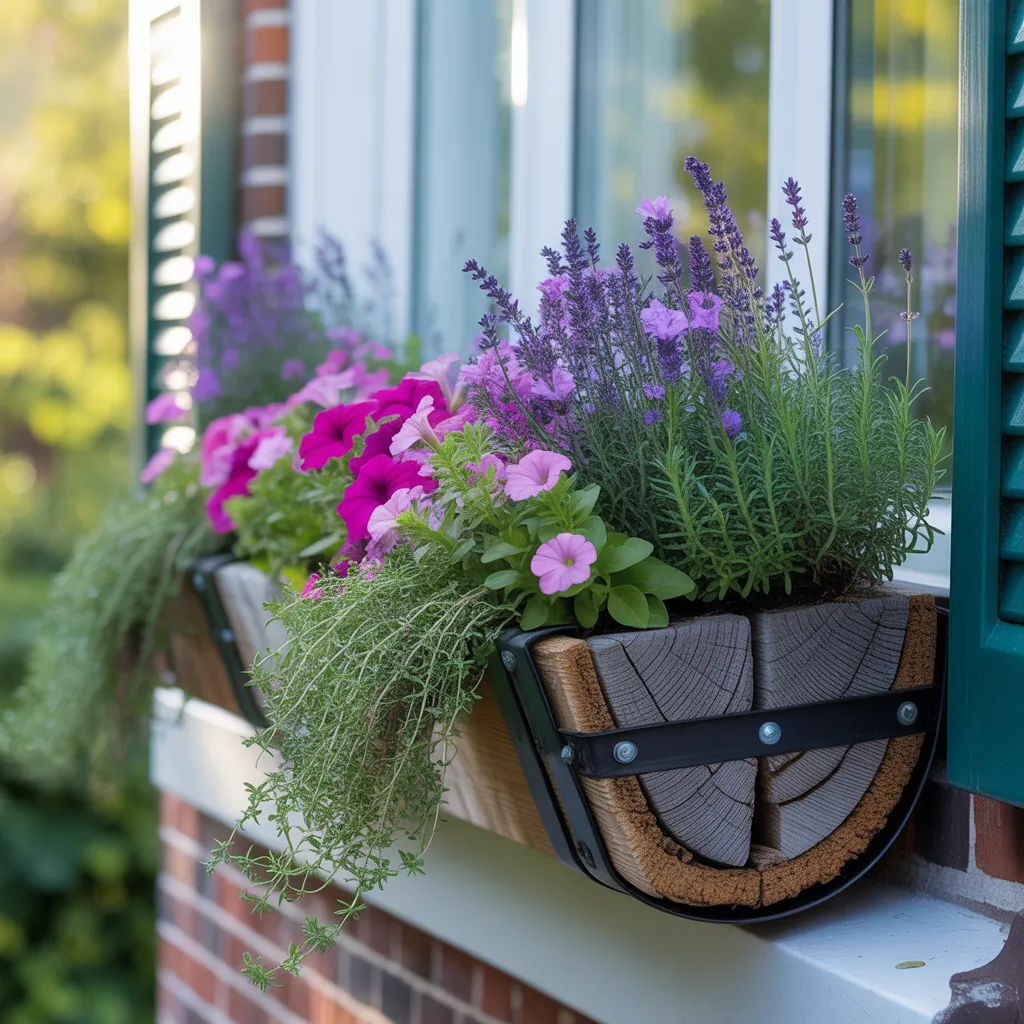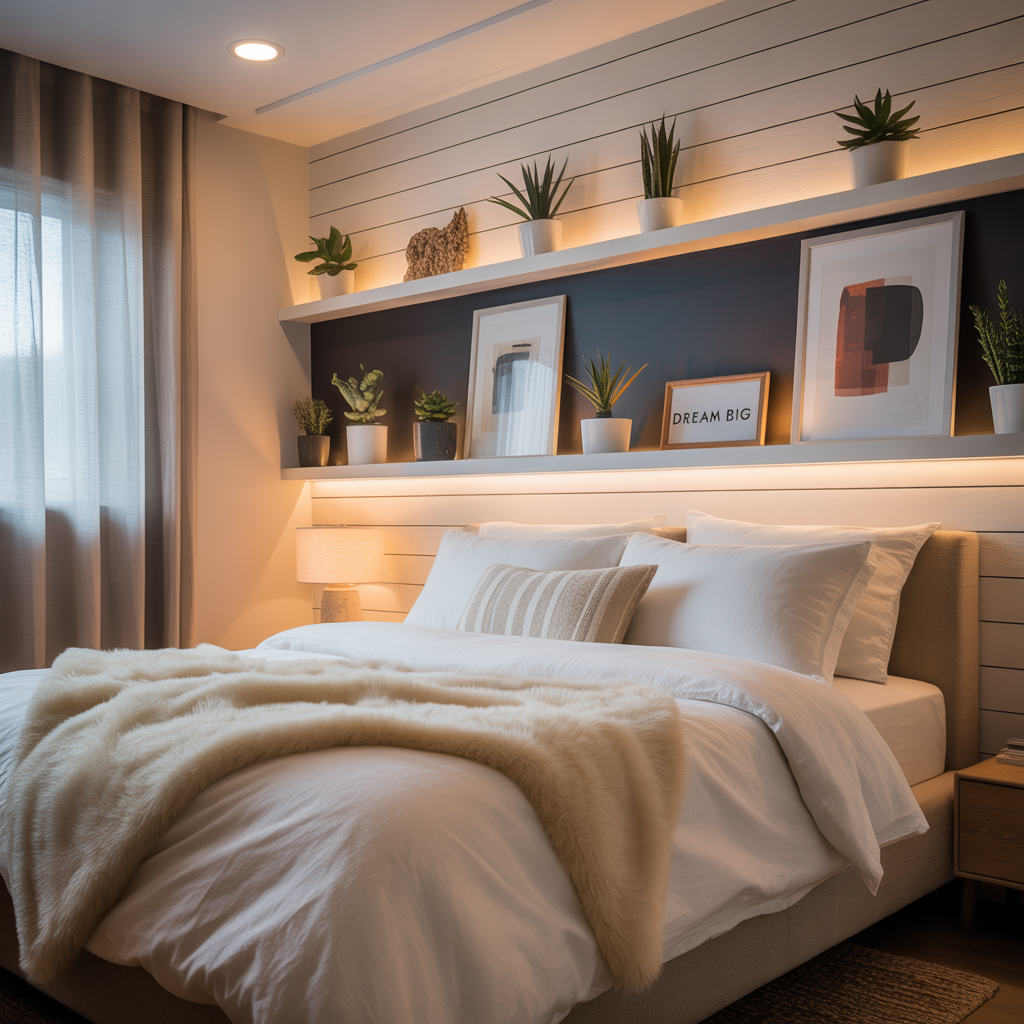Imagine you’ve finally picked the perfect paint color, moved the furniture around twice, and still feel like the space is missing something — what if the answer is under your feet? Choosing the right floor can transform lighting, set the mood, and make daily life easier. If you’re staring at worn carpet, scratched hardwood, or a dated tile, these ideas for living room flooring will help you pick and install a floor you’ll love.
Why the right flooring matters
Flooring is more than aesthetics: it impacts maintenance, acoustics, warmth, and resale value. Whether you want cozy carpet, warm hardwood, waterproof vinyl, or industrial polished concrete, the right choice balances style, durability, and budget. Below are practical options paired with DIY tips so you can tackle part or all of the project yourself.
Top ideas for living room flooring
1. Engineered hardwood — classic look with stability
Engineered hardwood gives you real wood on top of a plywood base, making it more stable in humid or variable climates than solid hardwood. It’s great for living rooms where you want that authentic wood grain.
- Design tip: Use wide planks for a modern, spacious feel; choose matte finishes for a rustic look.
- DIY step-by-step: Acclimate boards 48–72 hours, install a moisture barrier, lay as a floating floor or nail down, and finish edges with transition strips.
2. Luxury vinyl plank (LVP) — waterproof and budget-friendly
LVP mimics wood or stone at a fraction of the cost and is waterproof, scratch-resistant, and pet-friendly. It’s one of the best flooring for living room areas that connect to kitchens or entryways.
- Design tip: Choose a plank with low gloss and realistic embossing for a convincing look.
- DIY step-by-step: Prepare a flat subfloor, roll out an underlayment if needed, click-lock or glue the planks, and trim door casings for a clean finish.
3. Laminate flooring — affordable and easy to install
Laminate gives a wood-like appearance and installs easily as a floating floor. It’s durable and good for high-traffic living rooms on a budget.
- Design tip: Match plank width and tone with your furniture — warm tones for cozy rooms, cool greys for minimalist design.
- DIY step-by-step: Level the subfloor, lay underlayment, stagger seams for stability, and use spacers for expansion gaps.
4. Carpet and area rugs — comfort and sound control
Carpet remains unbeatable for warmth and sound absorption. If you don’t want wall-to-wall carpet, try hardwood or LVP with a large area rug for softness underfoot.
- Design tip: Use patterned or textured rugs to anchor seating areas and add visual interest.
- DIY step-by-step: For wall-to-wall carpet, stretch the carpet using a power stretcher; for rugs, place a non-slip pad underneath and center it with furniture placement rules in mind.
5. Tile and stone — dramatic and durable
Tile or natural stone can make a bold statement and is easy to clean. Consider heated floors (underfloor heating) for comfort on cold mornings.
- Design tip: Large-format tiles make small rooms feel bigger; herringbone or chevron patterns add architectural interest.
- DIY step-by-step: Ensure the subfloor is reinforced, waterproof if needed, use a level, apply thinset mortar, lay tiles with spacers, and grout carefully.
How to choose the right living room floor: practical considerations
Pick a floor based on lifestyle, budget, and maintenance:
- Pets and kids: Choose scratch- and stain-resistant surfaces like LVP, engineered hardwood with a tough finish, or low-pile carpets.
- Noise control: Carpet or rugs reduce sound. Underlayments can help laminate and vinyl perform better acoustically.
- Budget: Laminate and vinyl are economical; engineered hardwood and tile cost more upfront but add longer-term value.
- Climate: In humid regions, avoid solid hardwood — go engineered or resilient flooring.
DIY tips for a successful flooring project
Prep like a pro
Remove baseboards, doors, and old flooring if necessary. Clean and level the subfloor — little dips or debris will ruin a floating floor. Measure twice; calculate 10% extra for cuts and waste.
Tools and materials checklist
- Tape measure, chalk line, pry bar
- Underlayment, spacers, transition strips
- Saw for planks (jigsaw, miter saw, or pull saw for laminate)
- Rubber mallet, tapping block, and a pull bar
- Safety gear: knee pads, eye protection, and gloves
Step-by-step quick guide for installing click-lock vinyl or laminate
- Acclimate planks to room temperature for 48 hours.
- Remove trim and undercut door jambs for a flush fit.
- Lay underlayment if recommended, roll it out and tape seams.
- Start along the longest straight wall, placing spacers for expansion gaps.
- Click planks together, staggering seams at least 8-12 inches.
- Trim final row to fit and reinstall baseboards and transition pieces.
Design inspiration: match flooring to style
Here are quick pairings to spark ideas:
- Modern farmhouse: wide-plank engineered oak in a warm honey tone.
- Mid-century: narrow, dark walnut hardwood with low-profile rugs.
- Scandinavian: light ash or whitewashed laminate and simple area rugs.
- Industrial: polished concrete or large porcelain tile with metal accents.
Frequently Asked Questions
Q1: What is the best flooring for living room with pets?
A: Vinyl plank (LVP) and high-quality laminate are top choices for pet-friendly living rooms because they resist scratches and are easy to clean. Engineered hardwood with a durable finish can work if you maintain nails trimmed and use protective pads.
Q2: Can I install new living room flooring over the existing floor?
A: In some cases, yes. Floating floors like laminate or LVP can sometimes be installed over existing tile or wood if the surface is level. Carpet generally must be removed first. Always check manufacturer guidelines and address moisture or level issues first.
Q3: How do I choose the right color and finish?
A: Consider natural light, room size, and your decor. Light floors brighten and enlarge small rooms; dark floors add drama and hide stains. A matte finish is forgiving and hides scratches better than high-gloss finishes.
Conclusion: take the first step toward better flooring
From budget-friendly laminate and waterproof LVP to warm engineered hardwood and cozy rugs, these ideas for living room flooring offer a path to refreshed spaces you’ll enjoy every day. Start by measuring your room, choosing materials that match your lifestyle, and planning whether you want a full DIY install or pro help. Ready to get hands-on? Browse our DIY projects for step-by-step tutorials or explore home design ideas and kitchen upgrades to keep your whole house cohesive.
Call to action: Measure your space this weekend, pick your top two flooring options, and tackle a small sample installation — then share your progress and questions so you can finish with confidence!
Internal resources: DIY projects, home design ideas, kitchen upgrades



